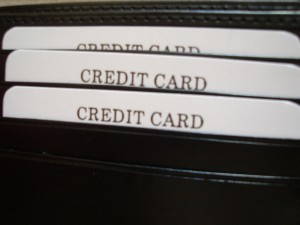I finally had a chance last night to watch the excellent PBS Frontline documentary on the American retirement “crisis”. If you have a spare hour, it’d be worth your time to watch the whole thing. (Here’s the transcript if you want to take a quick skim.)
The piece covers a lot of ground, but the two biggest points were that the burden of retirement planning has been plopped into the unprepared public’s lap in the form of 401(k) plans and that the 401(k) bucket of cash has been too tempting for plan managers, who have been grabbing the money for themselves in the form of fees.
In fact, the most powerful punch of the show is when it’s illustrated that the fees actually eat up as much as two-thirds of the gains over your working career. Fortunately, they also point to a solution: low cost index funds. Interestingly, it’s the exact same strategy espoused by none other than Mr. Money Mustache. They even interviewed MMM’s hero, Vanguard’s John Bogle! That was pretty cool to see and it was great to get reinforcement of my preexisting opinion about 401(k)’s and financial advisers.
Of course the program had to include some “real people” to add some emotional weight to the story. This is where the piece was at its weakest. One gaping hole was that they didn’t talk about these people’s spending rates and didn’t even mention whether they still carried a mortgage or not. For example, one woman said she had $500,000 in retirement funds at age 48, but somehow can’t imagine being able to retire until she’s in her mid-70s! Another fellow was shown at what looks like a waterfront home, talking about how he has to work part-time in his senior years. I actually liked him because he said he’d downsize into a tent if he had to. I think that’s the attitude that got him his waterfront house.
The reporter, the always intrepid Martin Smith, uses his own retirement as an example, noting that he dipped into his nest egg multiple times over the years. The financial adviser tells him he has to work full-time until age 70 and “from age 70 to 75, I have you working part-time.” The reporter notes that his savings went to his kids’ education, a divorce and “the crash of 2008.”
The real tear-jerking segment featured Debbie Skoczynski:
I freaked out when I took the money out of my 401(k). It was hard. I mean, it’s— you know, you never— every day on the news, I’d listen to it and I’d be, like, “Oh, God, it’s really bad. Will I be able to keep my house? Will—” you know, “I— what if my car breaks down? I can’t afford a car payment.” It just can’t be this hard to make— it can’t. You know, you hear these big companies with these people taking these huge bonuses. You’re thinking, “Well, what happened to the average Joe?” They just don’t care. They made their money already.
Now, I feel bad for Debbie, but you can see her one-dimensional thinking here. She asks “What if my car breaks down” and answers that with “I can’t afford a car payment.” I don’t want to pick on her, after all she’s having a rough time, but I was thinking, “Um, you can’t think of ANY other solutions to that potential problem?” Like maybe “car repair”? Or “cheaper car”. Or “the bus”? To me, she really represents how Americans have been trained to deal with life: just throw money at the problem and if I don’t have any money, that’s OK because I’ll have money later.” Had she not been too far stretched with (apparently) a large house payment and other expenses, she could have easily weathered the storm without tapping her retirement money.
The remainder of the show was mainly the strongly worded accusations and squirming insiders that make Frontline such a fun show to watch.
Unfortunately the show didn’t once talk about buying too much house, how to get rid of your mortgage, mindless spending, how much one needs to retire, or whether people should pay for their kids’ education.
If the show had a fatal flaw, it was that it uses a “Retirement Plan Consultant” to endorse the proposition that Baby Boomers don’t have enough to retire but then calls such advisers out at the end of the piece for giving bad advice and scooping up all the money in fees.
In fact, the financial planner at the beginning even pulls out the old “$1.5 million” trope again, saying one needs 10-20 times your yearly income to retire. Um, why? Not explained. Just gulped down by the reporter as if it were just handed down on a stone tablet.
I advocate trying to “pretire” as soon as possible, which means generating enough money through passive means to support yourself indefinitely. If you reach that stage before traditional “retirement”, then you should be able to get a nice raise when you retire. If we accept that as the goal, then your yearly salary becomes completely irrelevant to how much you need to have in your nest egg when you retire. There is NOTHING about how much you make today that helps you determine what you need to retire. The only thing that matters is how much money you need each month and how you’re generating that money.
The program does a great job of exposing many problems, particularly that the general public is completely clueless about this stuff and that they’re being robbed via fees. Sadly the reporter himself is in this category. His ending has him exploring online calculators(!) and finally comes to the conclusion “I will keep working.” Hopefully they’ll go deeper next time and explore the real math of retirement and pretirement: bringing in more than you spend.













